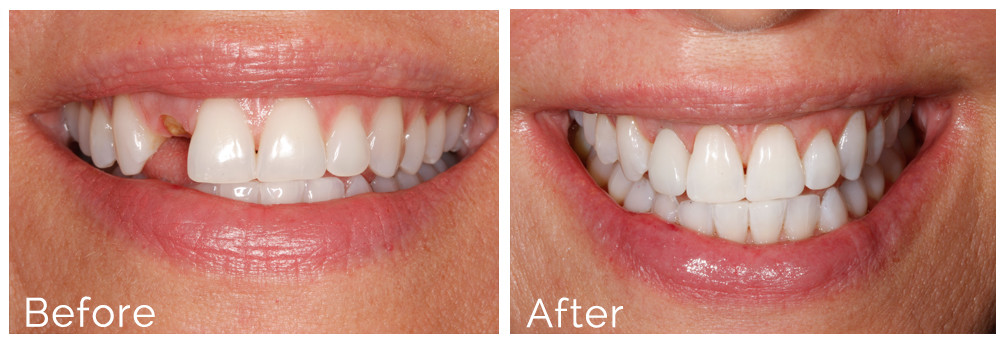How Dental Sense can Save You Time, Stress, and Money.
How Dental Sense can Save You Time, Stress, and Money.
Blog Article
Not known Factual Statements About Dental Sense
Table of ContentsSome Of Dental SenseRumored Buzz on Dental SenseHow Dental Sense can Save You Time, Stress, and Money.More About Dental Sense
are clinical gadgets operatively implanted into the jaw to recover an individual's ability to eat or their look. They provide support for artificial (fake) teeth, such as crowns, bridges, or dentures. When a tooth is shed because of injury or illness, an individual can experience complications such as fast bone loss, malfunctioning speech, or modifications to eating patterns that result in pain.Dental dental implant systems contain an oral implant body and oral implant joint and might likewise consist of an abutment fixation screw. Root canal procedure. The dental implant body is surgically put in the jawbone in location of the tooth's root. The dental implant abutment is normally connected to the dental implant body by the joint fixation screw and expands via gum tissues right into the mouth to support the affixed synthetic teeth
(http://tupalo.com/en/users/8103990)Structure of The Dental Implant System selecting oral implants, talk to your dental provider regarding the potential benefits and threats, and whether you are a candidate for the procedure. Things to take into consideration: Your overall wellness is an important consider figuring out whether you are an excellent candidate for dental implants, the length of time it will require to heal, and the length of time the implant may remain in area.
Smoking might affect the recovery procedure and lower the long-term success of the implant. The healing procedure for the dental implant body might take a number of months or longer, during which time you usually have a short-lived joint instead of the tooth. the dental implant procedure: Meticulously follow the oral hygiene directions provided to you by your dental provider.
Top Guidelines Of Dental Sense
Implant failing can lead to the demand for another surgery to fix or change the implant system. Recovers the capacity to chew Restores cosmetic appearance Helps maintain the jawbone from reducing due to bone loss Protects the health of the bordering bone and gum tissues Helps maintain adjacent (close-by) teeth secure Enhances high quality of life Damages to bordering all-natural teeth during implant placement Injury to the surrounding cells during surgical treatment, such as sinus perforation Injury during surgical procedure (for instance, fracture of bordering jawbone) Poor function, such as feeling like the teeth do not bite together usually A feeling that the tooth hangs or turning in place resulting from an abutment screw loosening Implant body failure (looseness of the dental implant body) due to systemic infection, which may be most likely in clients with uncontrolled diabetes because of regional infection in bone and gums supporting the dental implant body because of delayed recovery, which may be more probable in clients that smoke Trouble cleaning up the periodontals around the implant, leading to bad dental hygiene Unattended periodontal illness Post-surgical pins and needles because of nerve impingement or damage Constantly notify healthcare suppliers and imaging specialists that you have oral implants before any magnetic vibration imaging (MRI) or x-ray procedures.
FDA is not knowledgeable about any type of adverse occasions reported for MRI or x-ray procedures with dental implants. Oral implants systems are typically made of products that comply with worldwide consensus criteria of the International Company for Standardization (ISO) or ASTM International. These criteria have details of what makes a safe product.

A dental implant is a structure that replaces a missing tooth. With screw-like gadgets, the surgeon inserts an implant right into the jawbone, and it acts as a support for a man-made tooth, called a crown.
A Biased View of Dental Sense
Some individuals are not eligible for dental implant surgery. It is for oral surgeons to operate people with: severe illnessuncontrollable metabolic diseasebone or soft tissue disease or infectionIf these problems are fixed, an individual can have the surgical treatment. In, oral surgeons refrain from operating people with: If individuals with any of the above undertake oral implant surgical treatment, there is a higher threat of the implant falling short.

Oral dental implant surgery is an individualized process. It's not the same for every person. The complying with provides a general overview of what you can anticipate your dental expert, dental cosmetic surgeon, periodontist or prosthodontist to do: Place the implant surgically. Give you time to heal. Connect the message and final crown, bridge or denture.
Next, your cosmetic surgeon will very carefully put the dental implant right into your jaw. If your dental implant is near the front of your mouth, your dental professional will certainly make a temporary tooth for you to use till you recover.
Little Known Facts About Dental Sense.
Your company can tell you what to expect in your circumstance. Throughout the recovery phase, your jawbone should fuse to the oral implant. This procedure, called osseointegration, is vital for stability and long-term success. This process can take anywhere from three to 9 months. In some instances, it might take longer.
When your implant heals, your dental expert can attach the joint (little port post) and your final repair (crown, bridge More about the author or denture). This typically takes about one hour to complete and might need a 2nd small surgery. You shouldn't feel any discomfort during your dental implant procedure since your company will certainly utilize medicine to numb your gums.
Report this page